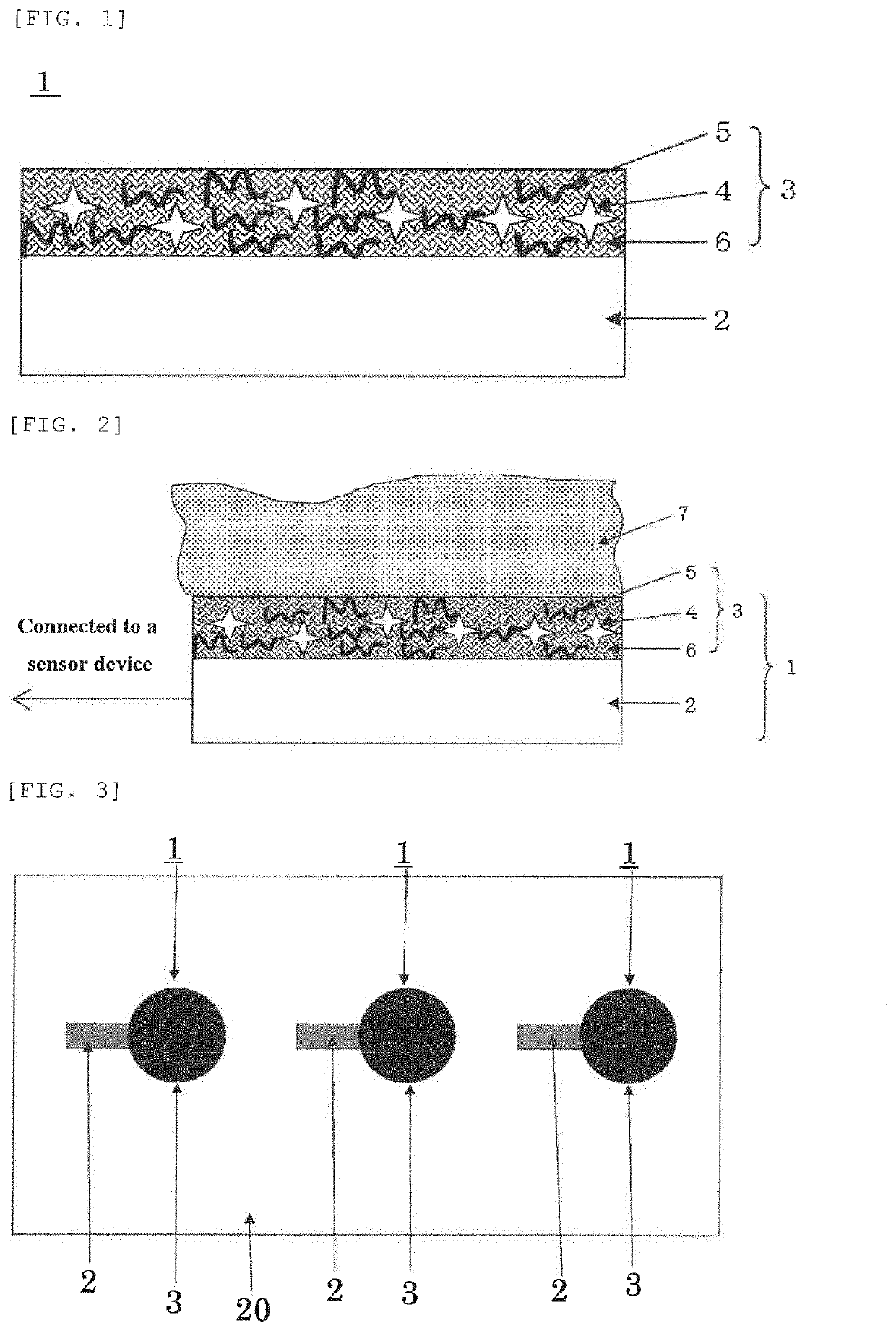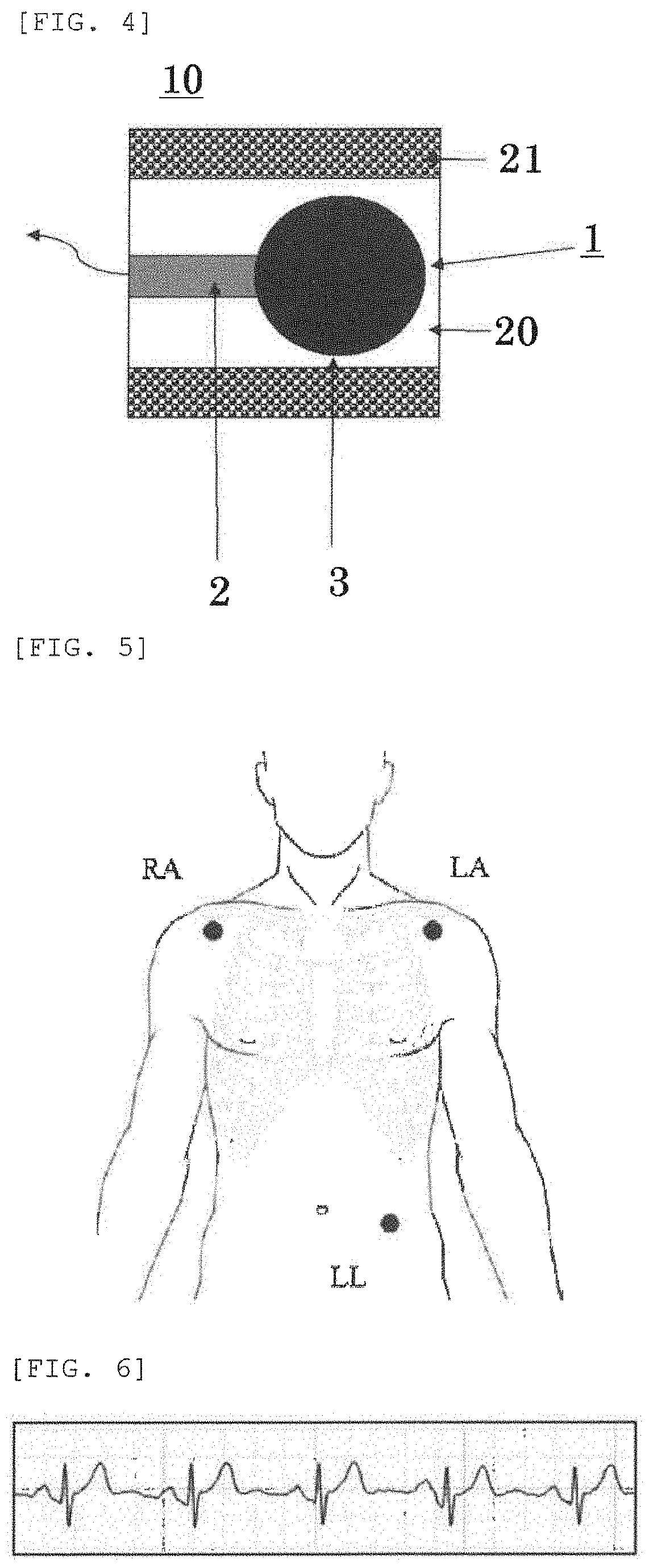Bio-electrode composition, bio-electrode, and method for manufacturing bio-electrode
a bioelectrode and composition technology, applied in the direction of electrically conductive paints, diagnostics, diagnostic recording/measuring, etc., can solve the problems of loss of electric conductivity, user skin allergy, skin allergy, etc., and achieve excellent biocompatibility, excellent ionic conductivity, and low cost
- Summary
- Abstract
- Description
- Claims
- Application Information
AI Technical Summary
Benefits of technology
Problems solved by technology
Method used
Image
Examples
example
[0220]Hereinafter, the present invention will be specifically described by giving Examples and Comparative Examples, but the present invention is not limited thereto.
(Synthesis of Ionic Polymer Materials)
[0221]Ionic polymers 1 to 21, which were blended as the ionic polymer material (conductive material) to bio-electrode composition solutions, were synthesized as follows.
[0222]First, 30 mass % solution of each monomer in cyclopentanone was introduced into a reaction vessel and mixed. The reaction vessel was cooled to −70° C. under a nitrogen atmosphere, and subjected to vacuum degassing and nitrogen blowing, which were repeated three times. After raising the temperature to room temperature, azobisisobutyronitrile (AIBN) was added thereto as a polymerization initiator in an amount of 0.01 moles per 1 mole of the whole monomers. This was warmed to a temperature of 60° C. and then allowed to react for 15 hours. After the polymerization, the polymer solution was allowed to react with a c...
examples 1 to 27
, Comparative Examples 1, 2
(Preparation of Bio-Electrode Compositions)
[0241]On the basis of the compositions shown in Tables 1 to 3, the ionic polymer material (salt), the resin, the organic solvent, and the additives (radical generator, platinum catalyst, electric conductivity improver, ion receptivity improver, ionic additive) were blended to prepare bio-electrode compositions (Bio-electrode composition solutions 1 to 24, Comparative bio-electrode composition solutions 1, 2).
TABLE 1Bio-electrodeIonic polymercompositionmaterialResinOrganic solventAdditivesolution(parts by mass)(parts by mass)(parts by mass)(parts by mass)Bio-electrodeIonic polymer—BE(60)IRGACURE TPO(1)composition1 (100)cyclopentanone(70)solution 1Bio-electrodeIonic polymer—BE(60)IRGACURE TPO(1)composition2 (100)cyclopentanone(70)solution 2Bio-electrodeIonic polymer—BE(60)IRGACURE TPO(1)composition3 (100)cyclopentanone(70)solution 3Bio-electrodeIonic polymerSiloxane compound 1(40)ISOPAR G(60)CAT-PL-50T(0.7)compositi...
PUM
| Property | Measurement | Unit |
|---|---|---|
| temperature | aaaaa | aaaaa |
| specific surface area | aaaaa | aaaaa |
| density | aaaaa | aaaaa |
Abstract
Description
Claims
Application Information
 Login to View More
Login to View More - R&D
- Intellectual Property
- Life Sciences
- Materials
- Tech Scout
- Unparalleled Data Quality
- Higher Quality Content
- 60% Fewer Hallucinations
Browse by: Latest US Patents, China's latest patents, Technical Efficacy Thesaurus, Application Domain, Technology Topic, Popular Technical Reports.
© 2025 PatSnap. All rights reserved.Legal|Privacy policy|Modern Slavery Act Transparency Statement|Sitemap|About US| Contact US: help@patsnap.com



